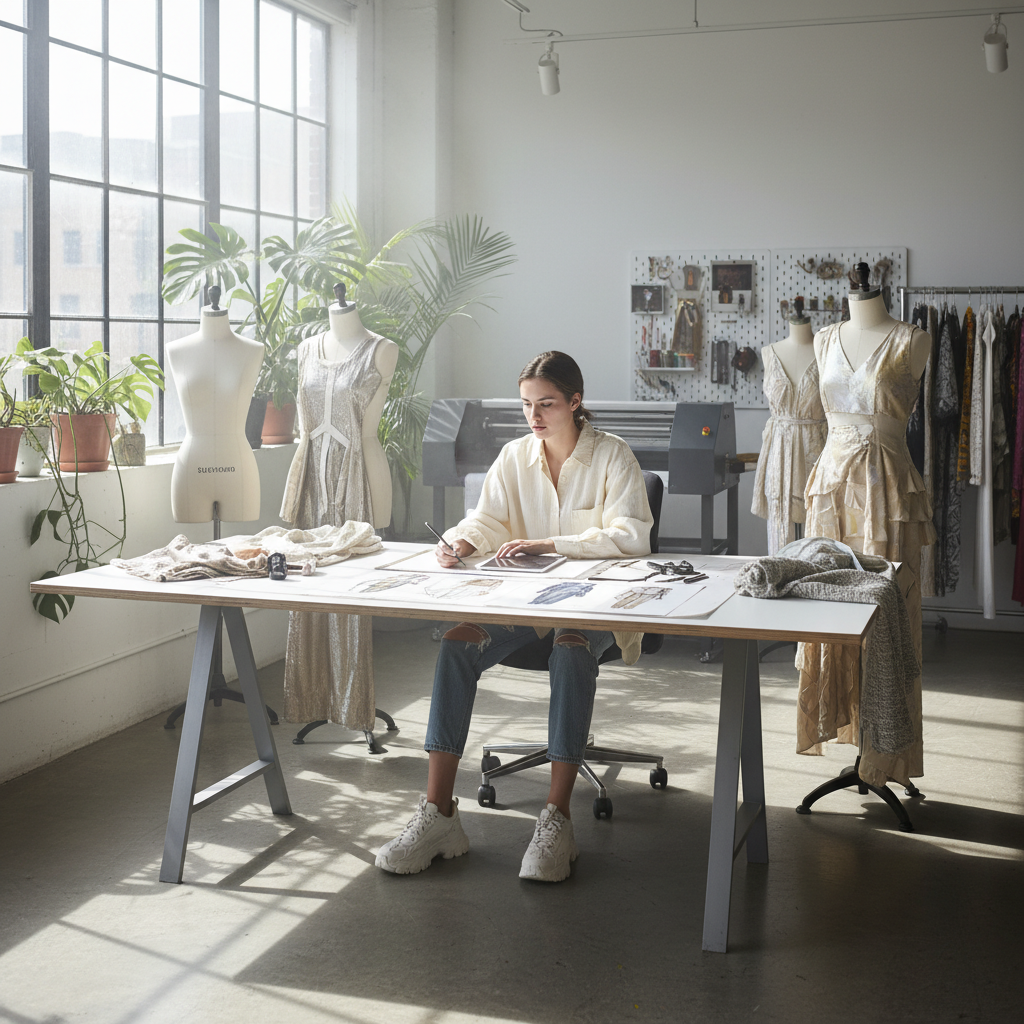
Table of Contents
- Introduction
- Top Fashion Design Schools Worldwide
- What to Look for in a Fashion Design School
- Frequently Asked Questions
- What is the difference between a fashion design school and a general art school?
- How important are internships during fashion design studies?
- Can I attend a fashion design school online?
- What should I prepare for my portfolio when applying?
- Are there financial aid options available for fashion design students?
Introduction
So you want to be a fashion designer? That’s exciting—and honestly, a little terrifying too. Choosing the right fashion design school isn’t just about picking a place to study for a few years. It’s about finding your creative home, the place that’ll shape how you see fashion, how you think about design, and ultimately, how you’ll make your mark in this wild, wonderful industry.
Let’s be real here. The fashion world moves fast. Really fast. One day everyone’s obsessing over sustainable fabrics, the next it’s all about digital fashion and virtual runways. That’s exactly why the school you choose matters so much. You need a place that doesn’t just teach you how to sketch and sew (though those skills are crucial). You need somewhere that gets you thinking like a designer—someone who understands both the artistic vision and the business reality behind every beautiful piece.
Here’s something interesting: today’s fashion schools are embracing technology in ways that would’ve blown our minds just a decade ago. We’re talking about education technology trends that are completely revolutionizing how designers learn and create. Virtual design studios? Check. AI-powered pattern making? Absolutely. Some schools are even using VR to let students “walk” their collections down digital runways before they’ve sewn a single stitch. Pretty cool, right?
But wait—there’s another side to this story that a lot of people don’t think about. Many fashion graduates (maybe even you?) dream of starting their own labels. That means you’re not just learning to be a designer; you’re learning to be an entrepreneur. This is where things get interesting. Understanding startup crowdfunding platforms could be the difference between your designs staying in your sketchbook and actually making it to market. And knowing the advantages of a sole proprietorship might just save you from some costly business mistakes down the road.
Then there’s marketing. (I know, I know—you probably thought you’d escape business classes by studying fashion.) But here’s the thing: you could design the most incredible clothes in the world, and if no one knows about them, what’s the point? Understanding why marketing is important for business isn’t just helpful for fashion designers—it’s essential. From building your personal brand to launching killer social media campaigns, these skills will serve you whether you’re working for a major fashion house or building your own empire.
What You’ll Learn in This Guide
We’re going to walk through this together, step by step. Here’s what we’ll cover:
- Top Fashion Design Schools Worldwide: We’ll explore the most prestigious institutions that are turning out tomorrow’s fashion leaders—complete with the inside scoop on what makes each one special.
- What to Look for in a Fashion Design School: The non-negotiables, the nice-to-haves, and the red flags you should spot from a mile away when evaluating programs.
- Costs and Financial Aid Options: Let’s talk money (because someone has to). We’ll break down tuition costs, scholarship opportunities, and creative ways to fund your fashion education.
- Career Opportunities After Graduation: From traditional designer roles to emerging careers in fashion tech, we’ll map out where your degree can take you.
Look, choosing a fashion school can feel overwhelming. There are so many options, so many factors to consider, and let’s face it—this decision is going to shape your entire career. That’s exactly why we’re here to help you cut through the noise and focus on what really matters.
In the coming sections, you’ll discover schools that are pushing boundaries and breaking traditional molds. Some focus on sustainable fashion (huge right now). Others are diving deep into fashion technology and digital design. We’ll introduce you to programs where industry veterans teach alongside cutting-edge researchers, creating the perfect blend of real-world experience and innovative thinking.
We’ll also get practical about the application process, financing your education, and making the most of your time as a student. Plus, we’ll explore how immersing yourself in fashion culture—through resources like the best fashion documentaries or mastering everyday styling like how to wear layered clothing and how to style button down shirts—can deepen your understanding and fuel your creativity.

So you’re thinking about fashion school? Smart move. But here’s the thing—not all fashion schools are created equal. Some will launch your career into the stratosphere, while others might leave you wondering what happened to your tuition money. The school you choose doesn’t just affect your education; it shapes your entire creative journey, opens doors you didn’t even know existed, and connects you with people who could change your life. Getting clear on what makes certain schools special (and what they expect from you) is probably the most important research you’ll ever do.
Top Fashion Design Schools Worldwide
The fashion education world is absolutely buzzing with incredible schools that somehow manage to honor tradition while pushing every boundary imaginable. These aren’t just places where you learn to sew—they’re creative powerhouses that have launched legends and continue to shape the industry’s future. What makes them special? It’s usually a mix of visionary teaching, state-of-the-art facilities, and location, location, location. When your school sits in the heart of a fashion capital, magic happens. You’re not just studying fashion; you’re living it. Speaking of building your fashion presence, if you’re serious about this path, you’ll want to master digital storytelling too—check out how to start a fashion blog. Trust me, it’s become essential for designers today.
Here’s what really gets me excited about the top schools: their locations aren’t accidents. Picture studying in Milan, Paris, or New York—you’re literally surrounded by the industry you want to join. The networking events? Incredible. The internship opportunities? Life-changing. And don’t get me started on the facilities—we’re talking cutting-edge studios, textile labs that feel like science fiction, and digital design tools that make your laptop look like a typewriter. But here’s a pro tip: make sure these amazing resources actually align with where you want your career to go. Oh, and while you’re mastering the technical stuff, don’t forget the styling fundamentals. Knowing how to style basics like blazers will seriously up your fashion game.
School Highlights
Want to know what separates the good schools from the great ones? Here’s what to look for:
- Innovative Programs: The best schools aren’t stuck in the past. They’re offering tracks in sustainable fashion, costume design, fashion tech—basically preparing you for challenges that don’t even exist yet. Pretty cool, right?
- Notable Alumni: This isn’t about name-dropping (okay, maybe a little). When a school’s graduates are running major fashion houses and winning international awards, that tells you something powerful about the education quality.
- Collaborative Projects: Think global partnerships, fashion weeks, design competitions. These aren’t just résumé boosters—they’re your chance to build an incredible portfolio while still in school.
- Industry Mentorship: Having working professionals guide your journey? Priceless. These connections often become lifelong career assets.
These elements create a perfect storm of opportunity. But here’s the reality check: prestige alone won’t guarantee success. You need to find a school that fits your learning style, your goals, and honestly, your personality.
Now that you know what makes schools special, let’s talk about the nitty-gritty of choosing one. Because the right fit matters more than rankings ever will.
What to Look for in a Fashion Design School
Choosing a fashion school is like dating, but with higher stakes and more expensive consequences. You’re not just picking classes—you’re choosing the people who’ll shape your creative vision, the network that’ll support your career, and the environment where you’ll spend some of the most formative years of your life. Every school has its own personality, strengths, and blind spots. Some excel at avant-garde creativity, others at commercial viability. Some have incredible industry connections, others focus on technical mastery. Your job? Figure out which combination works for you. And while you’re at it, start building your style vocabulary—understanding classics like how to style a little black dress shows you appreciate both tradition and innovation.
The network factor can’t be overstated. A school’s connections literally become your connections. Those alumni working at major fashion houses? They could be your future mentors, collaborators, or even employers. The professors with industry experience? They’re walking LinkedIn networks. When you’re researching schools, dig deep into their track record. Do graduates actually land jobs? Are they happy with their careers? Are they willing to help current students? These questions matter more than any glossy brochure.
Curriculum and Specializations
The best fashion programs don’t just teach you one way of thinking—they give you a complete toolkit:
- Diverse Course Offerings: You want everything from garment construction to textile science, digital design to fashion history. Sustainability is huge right now too. The more perspectives you gain, the more versatile you’ll be.
- Hands-on Experience: Studio time is sacred. But the real magic happens when schools connect you with actual fashion houses for internships. That’s where theory meets reality (and where you find out if you actually love this as much as you think you do).
- Internship Opportunities: Schools with solid industry relationships can place you in internships that actually matter. We’re talking real experience, real connections, real impact on your future.
- Flexible Specializations: Maybe you’re passionate about luxury fashion. Or sportswear is your thing. Eco-friendly design? The best programs let you follow your interests without boxing you in.
This foundation ensures you graduate ready for whatever the fashion world throws at you—and believe me, it’ll throw a lot.
But curriculum is just one piece of the puzzle. The people teaching you and the network supporting you? That’s where the real magic happens.
Faculty Expertise
Your professors can make or break your education. Here’s what exceptional faculty brings to the table:
- Industry Backgrounds: When your professor has actually worked at major fashion houses or built their own successful brand, every lecture becomes a masterclass in real-world application.
- Mentorship Roles: The best professors don’t just teach—they champion your success. They’ll help refine your portfolio, strategize your career moves, and introduce you to people who matter.
- Research and Innovation: Faculty engaged in cutting-edge research keeps your education current. While fashion history matters, you need professors who understand where the industry is heading.
- Global Connections: Professors with international networks can open doors to overseas internships and collaborations that transform your perspective and career prospects.
Remember: you’re not just choosing classes, you’re choosing mentors who could influence your entire career trajectory.
Industry Connections and Alumni Network
This might be the most important factor of all. Here’s why networks matter so much:
- Job Placement Rates: Schools with strong industry ties don’t just educate—they place graduates. Higher employment rates and better starting salaries aren’t accidents; they’re the result of strategic relationships.
- Alumni Success Stories: Active, successful alumni who stay engaged with their schools create opportunities for current students. These aren’t just feel-good stories—they’re your future career ladder.
- Collaborative Events: Fashion shows, industry workshops, networking events—these aren’t just portfolio builders. They’re where you meet the people who could change your life.
- Professional Memberships: Some schools offer access to fashion councils and design organizations. Getting connected to industry standards and trends early gives you a serious advantage.

Picking the right fashion design school? It’s one of those decisions that’ll shape everything that comes next. We’ve covered a lot of ground here, and here’s what really matters: the best schools don’t just teach you how to sketch and sew (though those skills are essential). They help you discover your creative voice while building the technical chops and business savvy you’ll actually need in this industry. Think innovative curriculums, real hands-on experience, and mentors who’ve been where you want to go. Whether you’re drawn to sustainable fashion, digital design, or starting your own brand, these schools prepare you for whatever direction the fashion world throws at you.
But here’s something equally important—maybe even more so. The connections you make matter. A lot. When you’re learning from faculty who’ve worked with major brands, landing internships that open doors, or tapping into alumni networks that span the globe, you’re not just getting an education. You’re building relationships that could change your career trajectory overnight. And let’s talk money for a second—understanding your financial aid options and planning for costs keeps your education journey from becoming a stress nightmare. The career paths afterward? They’re incredibly diverse. Runway design, fashion marketing, launching your own label—a solid educational foundation opens up possibilities you might not have even considered.
Now that you know what to look for in top fashion design schools, let’s talk about getting ahead. Want to build your personal brand? Start with our guide on how to start a fashion blog—it’s becoming essential for designers today. Level up your styling skills by mastering how to wear layered clothing, because versatility is everything in this field. For inspiration and insight into fashion’s cultural impact, dive into the best fashion documentaries that every future designer should watch. And here’s something that might surprise you—understanding why marketing is important for business will completely change how you approach your designs and career strategy.
Your school choice is an investment in who you’ll become as a designer. Take control of this process. Seek out programs that align with your goals, nurture your talents, and offer the support systems you need to thrive. Keep building those skills—check out our guide on how to style button down shirts for some practical styling wisdom. Stay curious. Stay committed. Keep learning every single day. With passion, persistence, and the right resources, your fashion design education can lead to the kind of impactful, fulfilling success you’ve always imagined. This is your moment to embrace this exciting path and create the fashion legacy you’ve been dreaming about.
Frequently Asked Questions
-
What is the difference between a fashion design school and a general art school?
- Fashion design schools focus specifically on apparel, textiles, and fashion industry skills, whereas general art schools cover broader artistic disciplines.
-
How important are internships during fashion design studies?
- Internships provide practical experience and networking opportunities, which are crucial for career success in fashion.
-
Can I attend a fashion design school online?
- Many schools now offer online courses, but hands-on experience remains important, so check each program’s format carefully.
-
What should I prepare for my portfolio when applying?
- Include a variety of creative projects showcasing your skills in design, drawing, and sewing.
-
Are there financial aid options available for fashion design students?
- Yes, many schools offer scholarships, grants, and work-study programs to help with tuition costs.
